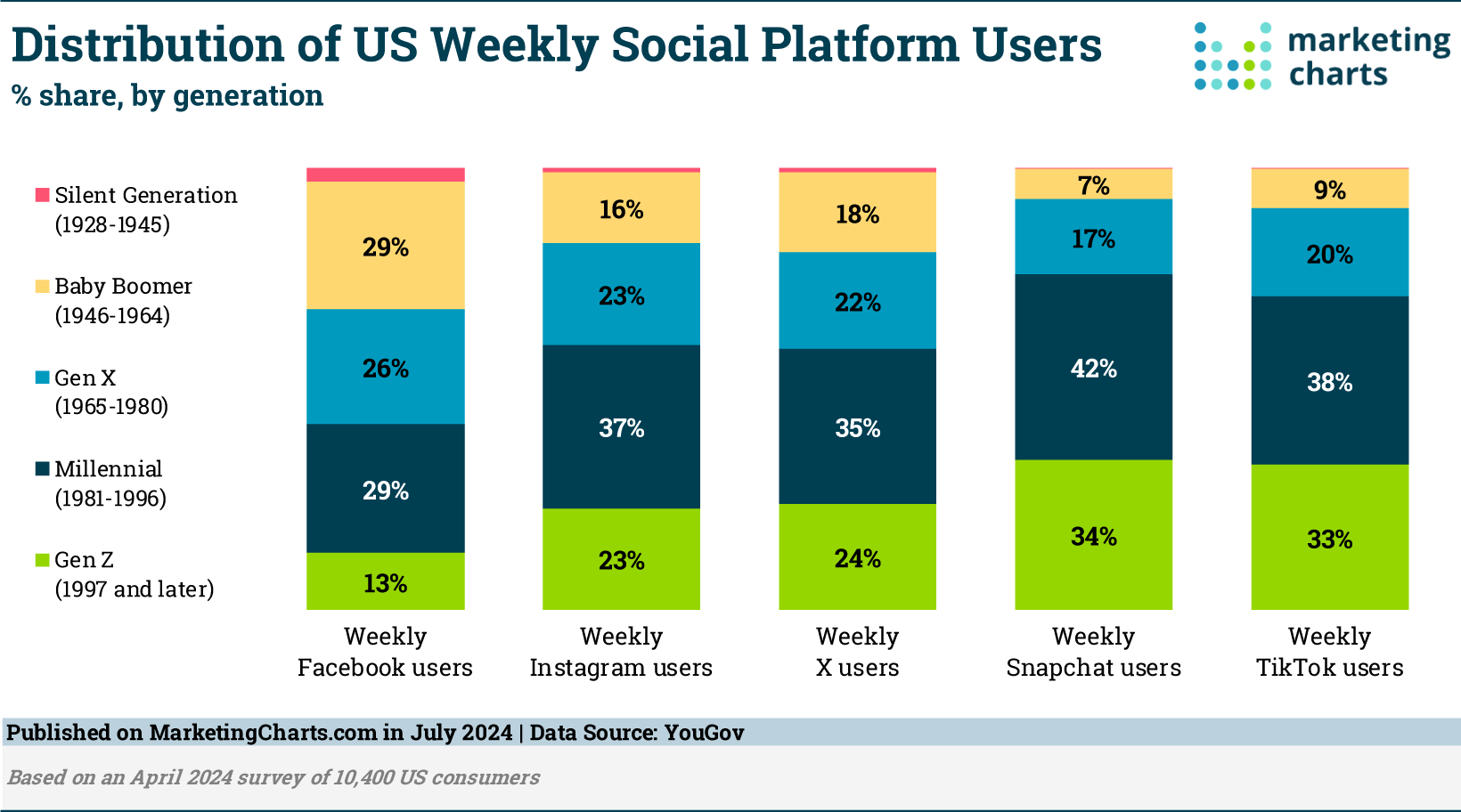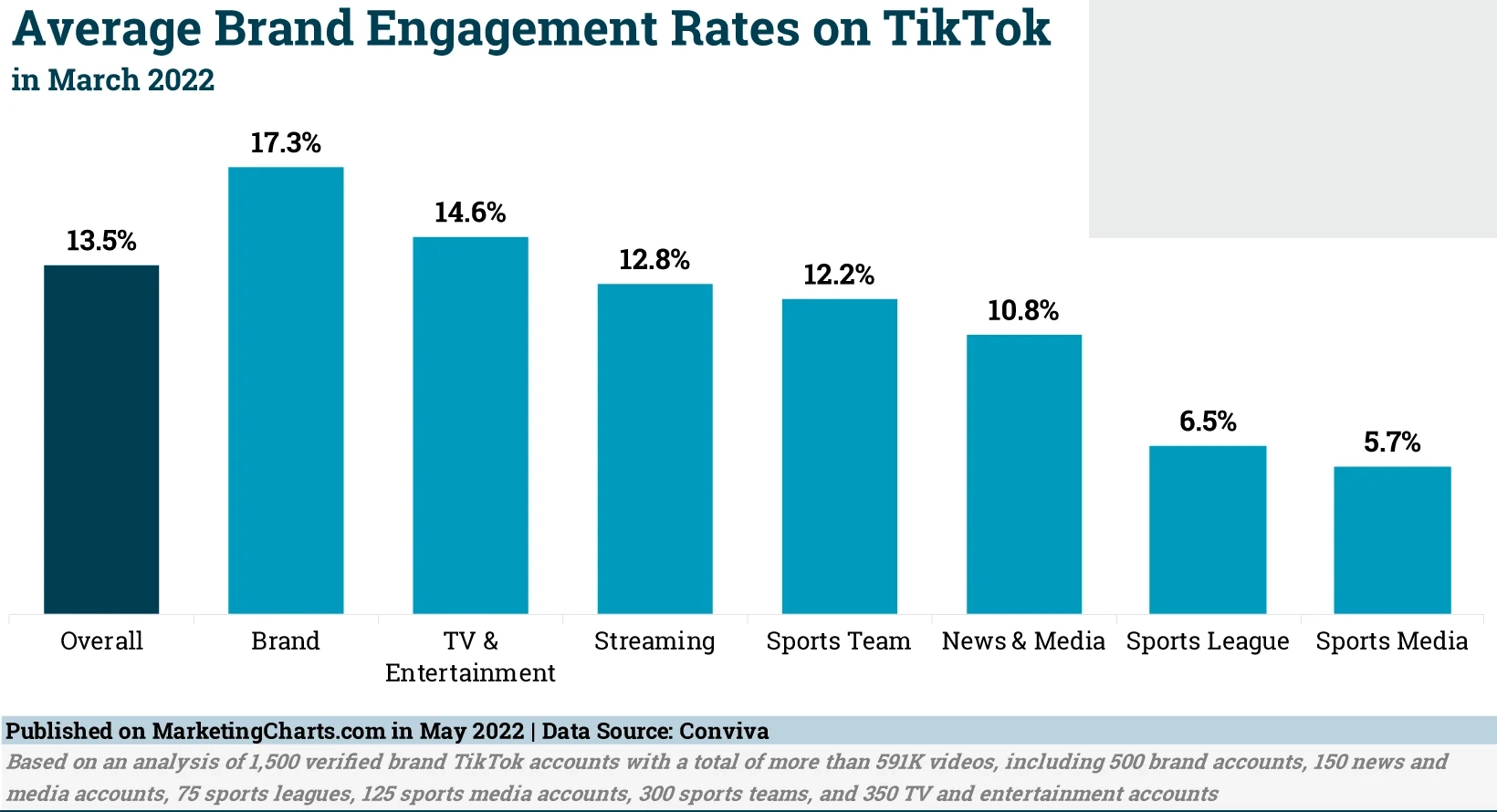
by Lori Berson | Aug 6, 2024 | Marketing, Marketing Strategy, Social Media
It’s easy to get caught up in the latest artificial intelligence (AI) tools and advanced technologies and overlook the power of human creativity and artistic expression in marketing. However, these elements could be your secret weapons for gaining a significant edge over your competitors. Here’s why infusing creativity and art into your marketing is more crucial than ever.
Breaking Through the Digital Noise
In today’s oversaturated digital space, we are bombarded with countless ads and messages daily. Creative, artistically driven campaigns cut through this noise, capturing attention in ways that standard, AI-generated content simply can’t match. By presenting your brand in a unique, visually striking manner, you’re more likely to stop the scroll and engage your audience. Example: Apple’s “Shot on iPhone” campaign.
Emotional Connection: The Ultimate Differentiator
While AI can analyze data and optimize campaigns, it struggles to replicate human emotions. This is where the human touch shines. Creativity taps into the emotional core of your audience, creating connections that go beyond mere transactions. This emotional resonance builds brand loyalty, encourages word-of-mouth marketing, and creates a customer base that chooses your brand not just for its products and/or services, but for its identity and values. Example: Dove’s “Real Beauty” campaign.
Memorable Brand Identity
In a sea of similar products and services, a creatively crafted brand identity stands out. Artistic elements in your marketing – through visual design, storytelling, or imaginative campaigns – make your brand more memorable and enhance the overall customer experience, differentiating your brand in ways that technology alone cannot. This translates directly into a competitive advantage, as customers are more likely to recall and choose your brand when making purchasing decisions. Example: Nike’s “Just Do It” campaign.
The Human Touch in a Tech-Driven World
As automation and AI become more prevalent in marketing, the human elements of creativity and artistic expression become even more valuable. By emphasizing creativity and art in your marketing, you signal to your customers that there are real people behind your brand—people with imagination, empathy, and a genuine desire to connect. This human touch can be a powerful differentiator in a market where many brands may come across as cold or impersonal. Example: Slack’s hand-drawn illustrations.
Innovation that AI Can’t Replicate
Truly groundbreaking ideas often come from creative leaps that AI can’t make. With artistic thinking, you’re more likely to develop innovative campaigns, products, and services that set new industry standards. This innovation-driven approach positions your brand as a leader rather than a follower. Example: the British Airways ‘Windows’ campaign.
Balancing Art and Analytics
The most effective marketing strategies combine the insights of data analytics with the impact of creative expression. While your competitors might rely heavily on data-driven decisions, your edge comes from interpreting that data through a creative lens, resulting in campaigns that are both targeted and inspirational. Example: Netflix’s personalized recommendations and artwork.
Cost-Effectiveness
Contrary to popular belief, creative campaigns don’t always require big budgets. A truly innovative idea can generate significant buzz and engagement without the need for extensive advertising spend. This cost-effectiveness can provide a substantial competitive advantage, especially for smaller brands competing against larger, well-funded competitors. Example: Airbnb’s “Made Possible by Hosts” campaign uses user-generated content to showcase the experiences of guests at various properties.
Increased Shareability
Creative content is inherently more shareable on social media platforms. When people encounter something unique, visually appealing, or emotionally resonant, they’re more likely to share it with their networks. This organic spread can dramatically increase your reach without additional cost, amplifying your marketing efforts far beyond your initial audience. Example: The Museum of Ice Cream pop-up museum.
Enhanced Perceived Value
A well-designed presentation can elevate the perceived value of your products or services. When marketing materials are thoughtfully designed and creatively executed, they can make your offerings appear more premium or desirable. This perceived value can justify higher price points and improve profit margins. Example: Tiffany & Co.’s blue box.
Improved Employee Engagement
A focus on creativity in marketing can have positive ripple effects throughout your organization. When employees see their company producing innovative, artistic campaigns, it can boost morale and encourage a culture of creativity. This can lead to increased employee engagement and productivity across departments, indirectly strengthening your competitive position. Example: the Zappos “Delivering Happiness” initiative.
Enhanced Customer Loyalty
Creativity in marketing doesn’t just attract new customers; it helps retain existing ones. When your brand consistently delivers creative, engaging content, it gives customers more reasons to stay connected with your brand beyond just your products or services. This enhanced loyalty can significantly reduce customer churn. Example: Starbucks’ “Starbucks Rewards” loyalty program.
Differentiation in Saturated Markets
In markets where products or services are similar, creativity becomes a key differentiator. A unique marketing approach can set your brand apart even when your offerings are comparable to competitors. This differentiation can be the deciding factor for customers choosing between similar options. Example: Method’s cleaning products and branding.
Tackling Complex Topics
Some products, services, and brand messages can be complex or technical. Creative approaches in marketing can simplify these complexities, making them more accessible and understandable to a broader audience. This ability to communicate complex ideas effectively can give you an edge, especially in knowledge-intensive industries. Example: Duolingo simplifies language learning through gamification and a friendly mascot.
The Competitive Power of Creativity
In the AI-driven future of marketing, creativity is not just a nice to have; it’s an essential competitive advantage. By infusing your marketing strategies with creative thinking and artistic expression, your brand can create marketing campaigns that not only sell products and services but also inspire, engage, and leave a lasting impact on your audience – giving you a powerful edge over competitors who may be relying solely on data and algorithms.
According to Dentsu Creative’s 2024 CMO Report, 83% of global CMOs believe that creative ideas can transform businesses and 81% see creativity as more important to their business than ever.
Ready to gain a competitive advantage with the power of creativity? To get started, schedule a call or email Lori at lberson@BersonDeanStevens.com.
BersonDeanStevens (BDS) has been developing creative results-driven marketing strategies, content, campaigns, and programs for over 25 years. And, we bring the knowledge and expertise to incorporate AI when necessary to gain efficiencies and help boost results. Whether you’re looking for a fractional CMO, need assistance when your internal workforce is overloaded, or need consulting from time to time, BDS is the perfect go-to resource. Client list.
![Who’s Using What Social Media in 2024? [Report]](https://bersondeanstevens.com/wp-content/uploads/2024/07/BDSSocial_1200-1080x630.jpg)
by Lori Berson | Jul 30, 2024 | Marketing, Marketing Strategy, Social Media
The YouGove US Social Media Report 2024 provides a detailed analysis of the current social media environment, highlighting generational trends, gender differences, platform usage patterns, and brand preferences. Below is a concise overview of the key findings.

Generational Trends in Social Media Usage
- Younger Generations: Gen Z and Millennials dominate TikTok and Snapchat, attracted by engaging, dynamic content.
- Older Generations: Facebook remains popular among Gen X and Baby Boomers, primarily for staying in touch with friends and family.
Gender Differences in Social Media Use
- Female Users: Predominantly use TikTok, Snapchat, Instagram, and Facebook.
- Male Users: More active on X (formerly Twitter).
Platform Usage Patterns
- Facebook: Used mainly to keep in contact with friends (75%).
- X (Twitter): Popular for news updates (57%).
- TikTok: Primarily for entertainment (49%).
Gen Z’s Attitudes and Behaviors
- Increased Usage: 62% spend more time on social media than a year ago; 54% feel it positively impacts their lives.
- Concerns: 67% worry about the time spent on social media.
- Digital Preference: Prefer online interactions over in-person ones, more so than older generations.
Brand Preferences Among Social Media Users
- Popular Brands: Spotify and Nike are highly favored on Snapchat and TikTok.
- Platform-Specific Preferences: Each social media platform has distinct brand loyalties, essential for targeted marketing.
To effectively tailor social media strategies, businesses need to understand generational and gender differences, usage patterns, and brand preferences. This insight helps organizations make informed decisions on where to allocate marketing resources. Targeting the right platforms enables brands to reach and engage their desired audiences efficiently.
Key Takeaway
Knowing your audience and customizing strategies to their unique preferences and behaviors is essential for building strong, lasting connections on social media.
About the Data: The results concerning the demographic makeup of weekly social media users are based on an April survey of 10,400 US consumers.
BersonDeanStevens (BDS) has been developing results-driven marketing strategies, content, campaigns, and programs for over 25 years. And, we bring the knowledge and expertise to incorporate AI when necessary to gain efficiencies and help boost results.
Whether you’re looking for a fractional CMO, need assistance when your internal workforce is overloaded, or need consulting from time to time, BDS is the perfect go-to resource.
Ready to take your social media marketing to the next level? To get started, schedule a call or email Lori at lberson@BersonDeanStevens.com.
BersonDeanStevens has been a recognized brand strategy and marketing leader for over 25 years. We work in partnership with you to differentiate your brand and achieve your business goals. Client list.

by Lori Berson | Feb 26, 2024 | Marketing, Marketing Strategy, Social Media
In the evolving world of social media, keeping up with platform popularity and usage trends is essential for marketers, content creators, and users alike. It has become an integral part of our daily lives, shaping the way we connect, share, and consume information.
A recent Pew Research Center study reveals the current state of social media platform use among US adults, and offers valuable insights into demographic preferences and platform adoption rates.

YouTube Leads The Pack
YouTube continues to dominate as the most widely used social media platform for a diverse audience, with an impressive 83% of US adults tuning into the watch videos. This marks a slight increase from 2021, signaling YouTube’s enduring appeal across various demographic groups. Interestingly, its popularity spans across genders, with both men (82%) and women (83%) nearly equally engaged. Multicultural groups, particularly English-speaking Asian (93%) and Hispanic (86%) adults, show higher adoption rates, highlighting YouTube’s broad reach.
The platform’s appeal is not limited to younger audiences; while 93% of 18-29-year-olds are avid YouTube viewers, the platform also enjoys high engagement rates among 30-49-year-olds (92%) and has seen a significant uptick in usage among those 65 and older, climbing from 38% in 2019 to 60%. Income and education levels also play a role in YouTube’s popularity, with higher rates of adoption among those in the top income bracket and with higher educational attainment.
Facebook’s Steady Presence
Despite fluctuating trends in social media, Facebook maintains a consistent user base, with 68% of survey respondents reporting usage. While its adoption is higher among women (76%) than men (59%), Facebook’s usage trends vary significantly across age groups, showing a decline among younger adults and a rise in usage among those aged 65 and older.
Instagram’s Growing Appeal
Instagram’s user base is on the rise, reaching 47% of adults, up from 40% in 2021. The platform’s visual nature and dynamic content seem to resonate more with women (54%), Hispanic (58%), and Asian adults (57%), suggesting its particular appeal among these groups. Younger adults (18-29) remain the most engaged, with a significant 78% using Instagram, pointing to its stronghold among the youth.
Pinterest’s Unique Demographic Skew
Pinterest, known for its inspiration-driven content, shows a unique demographic pattern, with significantly higher usage among women (50%) than men (19%). It also stands out for its slightly higher adoption rate among rural adults (36%) compared to urban counterparts (31%), suggesting its appeal across different living environments.
TikTok’s Rapid Rise
TikTok has seen explosive growth, with 33% of US adults using the platform, up from 21% in 2021. The app’s engaging content format appears to be particularly popular among women (40%), Hispanic (49%), and Black (39%) adults. Its highest usage among the youngest adults (18-29) at 62% underscores TikTok’s role as a key player in shaping social media trends.
LinkedIn and WhatsApp: Platforms for Professional and Personal Connections
LinkedIn and WhatsApp each cater to specific needs, with LinkedIn maintaining a steady 30% usage among adults, predominantly among higher-income and educated demographics. WhatsApp, on the other hand, has seen growth to 29% of adults, with notable popularity among Hispanic adults (54%), illustrating its importance in keeping personal and professional networks connected.
Other Platforms and Trends
Snapchat and Twitter/X maintain steady but distinct user bases, with Snapchat being more popular among younger users and Twitter/X showing broader use among higher-income and more educated adults.
Reddit’s popularity continues to rise, especially among men and the 18-29 age group, reflecting broader trends in social media where platforms cater to specific interests and demographics.
BeReal, while newer to the scene, shows potential for growth, particularly among younger adults and women, though its overall adoption remains low.
Implications for Marketers and Content Creators
Understanding these trends is crucial for anyone looking to engage with audiences effectively on social media. The data highlights the importance of tailoring content and strategies to specific platforms and demographic groups to maximize reach and impact. As social media continues to evolve, staying informed about these trends will be key to navigating the digital landscape successfully.
About the Data: The results are based on a May-September 2023 survey of 5,733 US adults (18+).
For help with your social media marketing, schedule a call or email Lori Berson at lberson@BersonDeanStevens.com.
BersonDeanStevens has been a recognized brand strategy and marketing leader for over 25 years. We work in partnership with you to differentiate your brand and achieve your business goals. Client list.

by Lori Berson | Jan 9, 2024 | Marketing, Marketing Strategy, Social Media
In today’s digital marketing landscape, leveraging social media for customer service has become essential. This approach, however, extends beyond simply reacting to customer complaints. It’s about integrating into the wider framework of engaging with your community across all social platforms where your presence is felt.
The key to effective response lies in the art of listening. Social listening involves delving into online dialogues about your brand, competitors, and relevant topics to gain deeper insights into your audience’s perceptions. Consider this: what’s the buzz around your latest product, your customer service efficiency, or even your brand’s new visual identity? To learn about what’s being said about your brand, below are several social listening tools for both small businesses and large corporations.
Social Listening Tools to Gain Audience Insights
It’s important to recognize that not all online mentions require direct engagement from your brand’s official channels. The primary goal of social listening isn’t always to respond but to understand and learn from these conversations.
For example, the launch of a new product or service by your company. Through social listening, you might notice a pattern of user experiences pointing to a common issue. By monitoring discussions around your product or service and brand on various social channels, you can gather valuable insights into user challenges and address them effectively. This proactive approach not only resolves issues but also demonstrates your brand’s commitment to listening and improving based on customer feedback.
For help with your social media marketing, schedule a call or email Lori Berson at lberson@BersonDeanStevens.com.
BersonDeanStevens has been a recognized brand strategy and marketing leader for over 25 years. We work in partnership with you to differentiate your brand and achieve your business goals. Client list.

by Lori Berson | Nov 13, 2023 | Marketing, Social Media
Do you ever feel like your social media efforts could be more efficient?
When managing social media, you have a lot on your plate – planning campaigns, creating content, monitoring conversations, and reporting to stakeholders. It’s easy for all the nitty-gritty details to start feeling overwhelming, getting in the way of the work that you need to focus on.
But what if you could effortlessly clear away the clutter, optimize your processes, and set your team up for social media success? With some thoughtful workflow improvements, the right tools, and a bit of strategy alignment across your organization, you can maximize your impact and use your limited resources wisely. To get started, here are a few tips:
Optimize Each Stage of Your Workflow
First, take a look at each stage of your social media workflow. Are there opportunities to alleviate manual tasks to helpful automation tools? Platforms like Hootsuite, Agorapulse, Buffer, and Sprout Social can schedule and publish your content calendar automatically. This small change translates to huge time savings that you can reinvest in a higher-level strategy.
Automate Reporting for Faster Insights
Next, speed up your reporting with easy-to-use analytics tools. Gathering metrics manually slows teams down and keeps your insights locked away in spreadsheets. But social media management platforms can automatically gather data and turn it into insightful presentation-ready reports your C-suite will love. Now your impact is clear, and your stakeholders have what they need to make smart, data-driven decisions.
Share Tools Company-Wide
As social media’s impact grows across the business, loop in key players from beyond your marketing team into your social efforts. For example: sales can analyze performance data and social listening insights to refine strategy. Customer service can foster engagement and provide responsive support. HR can build an employer brand and connect with candidates. Product teams can translate conversations into launches and strategies. Collaborating cross-functionally prevents duplication of efforts, siloes, and missed opportunities. To make this work, core social teams need to adapt as more stakeholders get involved by figuring out ownership and developing cross-functional expertise.
Integrate Social Media Tools With Your Tech Stack
Streamline your broader technology stack. Unified platforms with built-in workflows and integrations give your whole organization a holistic view of the customer without the hassle of constant tool-switching.
Refine Influencer and Partnership Processes
Simplify the way you work with influencers and brand partners. Managing a bunch of one-off email threads can get hectic fast. Look for ways to directly connect your influencer efforts with the rest of your social strategy for smoother execution.
Implementing even a few of these tips can make a massive difference in how much you accomplish each day. Best of all, with a few workflow tweaks, you can clear away complexity and make room for the work that takes your social media marketing to the next level.
Start optimizing your social media marketing today!
For help with your social media markering, schedule a call or email Lori Berson at lberson@BersonDeanStevens.com.
BersonDeanStevens has been a recognized brand strategy and marketing leader for over 25 years. We work in partnership with you to differentiate your brand and achieve your business goals. Client list.

by Lori Berson | Aug 16, 2022 | Content Marketing, Social Media
A new study from Conviva suggests that TikTok engagement rates are closely linked to follower count.

1,500 verified brand TikTok accounts were analyzed with a total of more than 591K videos, including 500 brand accounts, 150 news and media accounts, 75 sports leagues, 125 sports media accounts, 300 sports teams, and 350 TV and entertainment accounts.
Average Engagement Rates
The results show that there’s a strong negative correlation between follower count and engagement rate. So, the more followers, the lower the engagement rate.
For accounts with a follower count of less than 100K, the average engagement rate was a high 28%. Double-digit engagement rates were maintained among accounts with follower numbers of 1-200K (14%) and 2-300K (12%) but then fell below the 10% mark for all accounts with larger follower counts. As such, the lowest engagement rates were for the biggest accounts – with more than 10 million followers – which averaged engagement rates of around 2%.
Overall, the average engagement rate across all of the verified accounts was 13.5%. Brands enjoyed the highest average engagement rate among the various account types identified, at 17.3%, though Conviva notes that brands had the smallest average follower counts (~600,000 on average), which could explain the high rates given the data mentioned above.
Brands that want to increase their follower count should think about increasing their posting frequency, per the report’s findings. Overall, the analyzed accounts posted 189 times from March 2021 to March 2022, a 13% increase from the previous year’s average. However, the top 20 accounts by follower growth averaged 1,345 posts during that period, about 7.1x higher than the average. These accounts averaged around 3-4 posts per day. Moreover, the analysis found that those accounts that posted more frequently (1,250+ times over the year) gained significantly more followers than those that posted less frequently (0-250), though it’s conceivable that frequency was not the only factor here (resources, brand size, advertising, etc., could have all played a role).
Top TikTok Accounts By Follower Count
- Flighthouse (28.1 million)
- PSG (25.2 million)
- ESPN (22.9 million)
- Netflix (22.4 million)
- Overtime (19.2 million)
Among the brand accounts analyzed, Guinness World Records had the most total followers (19.1 million) and the largest year-over-year increase (7.8 million). Roblox was the next-largest in terms of follower size (7.9 million), ahead of Fortnite Official (7.7 million), Red Bull (6.5 million), and Crumbl Cookies (4.7 million). Among the top 50 brand accounts by follower size, #17 Among Us had the highest average engagement rate, of 11.41%.
Need assistance with your TikTok strategy and production? Schedule a call or email Lori Berson at lberson@BersonDeanStevens.com.
BersonDeanStevens has been a recognized brand strategy and marketing leader for over 25 years, including over a decade in marketing and sales automation. We work in partnership with you to differentiate your brand and achieve your business goals. Client list.

![Who’s Using What Social Media in 2024? [Report]](https://bersondeanstevens.com/wp-content/uploads/2024/07/BDSSocial_1200-1080x630.jpg)






